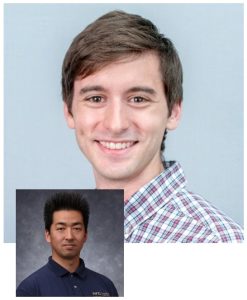 Intracortical microstimulation (ICMS) is a versatile tool to study the fundamental physiology of the nervous system and restore sensation in neuroprosthetics; however, the basic neurobiological mechanisms, with relation to which cell types are activated, in what spatiotemporal activation, and how they contribute to therapeutic efficacy remain poorly understood. There has been an increased appreciation of astrocytes’ contribution to regulating proper coordination of neural activity during sensory processing, but it still remains unclear how astrocytes respond to ICMS on a network level and how their activation modulates neuronal activity. Using a combination of two-photon microscopy, mesoscale imaging, and optogenetics or genetic manipulation of astrocyte calcium activity, researchers aim to determine the dynamic relationship between astrocyte and neuronal calcium activity during ICMS and understand how astrocytes respond to and may contribute to the therapeutic efficacy of ICMS paradigms.
Intracortical microstimulation (ICMS) is a versatile tool to study the fundamental physiology of the nervous system and restore sensation in neuroprosthetics; however, the basic neurobiological mechanisms, with relation to which cell types are activated, in what spatiotemporal activation, and how they contribute to therapeutic efficacy remain poorly understood. There has been an increased appreciation of astrocytes’ contribution to regulating proper coordination of neural activity during sensory processing, but it still remains unclear how astrocytes respond to ICMS on a network level and how their activation modulates neuronal activity. Using a combination of two-photon microscopy, mesoscale imaging, and optogenetics or genetic manipulation of astrocyte calcium activity, researchers aim to determine the dynamic relationship between astrocyte and neuronal calcium activity during ICMS and understand how astrocytes respond to and may contribute to the therapeutic efficacy of ICMS paradigms.
The NIH/National Institute of Neurological Disorders and Stroke funded a 3-year project which began on September 20, 2022. The project is entitled, “Astrocyte-Neuron Network Activity During In Vivo Brain Stimulation.” The project principal investigator is Kevin Stieger (pictured top), a graduate student in the laboratory of McGowan Institute for Regenerative Medicine affiliated faculty member Takashi Kozai, PhD (pictured bottom), Assistant Professor in the Department of Bioengineering at the University of Pittsburgh.
The project abstract follows:
Intracortical microstimulation (ICMS) is a primary component of fundamental neuroscience research and holds great potential for sensory restoration or sensory feedback in neuroprosthetics. Despite the wide use of electrical stimulation in neuroprosthetics and interventions such as spinal cord stimulation and deep brain stimulation (DBS), the fundamental physiological and mechanistic properties defining therapeutic efficacy remain poorly understood. For example, it is still unclear which cell types are activated, what role they play in therapeutic outcomes, and how to tune stimulation parameters to selectively elicit relevant activity in those cell types for sensory restoration. Of particular interest is the contribution of non-neuronal cells such as astrocytes. Astrocytes are emerging as important cells in the modulation of neuronal activity during sensory processing in which they respond to neurotransmitters with calcium elevations leading to the release of neuroactive substances to regulate synaptic function (i.e., gliotransmission). Importantly, the time scale in which astrocytes modulate neuronal and synaptic activity is consistent with ICMS-induced neural activity. It is because of these recently appreciated roles regarding astrocyte-neuron communication that astrocytes have been suggested as a vital component to brain stimulation. However, it is unclear how astrocytes respond to clinically relevant stimulation parameters on a network level and how that activation subsequently modulates neuronal activity in an awake animal. To address this gap in knowledge, this proposal will first quantify the calcium activity in cortical astrocytes and across a larger network induced by ICMS with different frequencies and temporal patterns known to have differential therapeutic efficacy using both two-photon microscopy and mesoscale imaging. Next, this proposal will quantify how ICMS-induced neuronal activity is modulated when astrocyte calcium activity is selectively increased (optogenetics) or decreased (viral transduction of a plasma membrane calcium pump) to determine how astrocytes regulate neuronal network activity during ICMS. Because astrocyte calcium activity regulates how these important cells modulate neuronal activity, the cumulative results of this proposal will provide valuable insight for fundamental neuroscience research and the design of stimulation paradigms to elicit astrocyte activity relevant to sensory restoration.
Congratulations, Mr. Stieger and Dr. Kozai!
Illustration: LinkedIn (Stieger)/McGowan Institute for Regenerative Medicine (Kozai).
Read more…
NIH Reporter: Astrocyte-Neuron Network Activity During In Vivo Brain Stimulation
